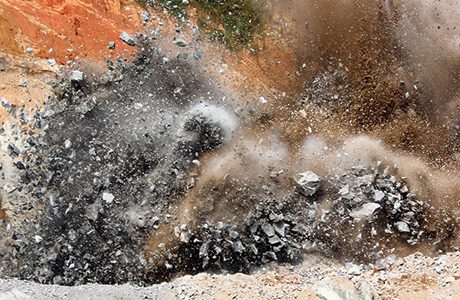BIOLOGISTS at the University of York have taken an important step in making it possible to clean large areas of land contaminated by explosives.
A team from the Centre for Novel Agricultural Products (CNAP) in the University’s Department of Biology has unravelled the mechanism of TNT toxicity in plants raising the possibility of a new approach to explosives remediation technology. TNT has become an extensive global pollutant over the last 100 years and there are mounting concerns over its toxicity to biological systems.
TNT has a significant impact on the diversity of soil microbial communities and vegetation. The majority of TNT remains in the roots of plants, where it inhibits growth and development. In the US alone it is estimated that some 10 million hectares of military land – an area the size of Maine – is contaminated with munitions constituents.

But whereas it is possible to ban toxic and polluting chemicals, the huge demand for military explosives means that TNT will continue to be used globally on a massive scale.
The researchers discovered that a key plant enzyme, MDHAR6, reacts with TNT, generating reactive superoxide, which is highly damaging to cells.
They found that mutant plants lacking the enzyme, previously implicated in protecting plants from stress, in fact have an enhanced TNT tolerance. By targeting this enzyme in relevant plant species, it may be possible to produce TNT resistant plants to revegetate and remediate explosives at contaminated sites such as military ranges and manufacturing waste sites.
Professor Neil Bruce, who led the research, said: “There is a lot of interest in natural mechanisms for the removal of recalcitrant toxic chemicals from the biosphere and because of the scale of explosives pollution, particularly on military training ranges.”
Co-researcher Dr Liz Rylott said: “Only by eliminating the acute phytotoxicity of TNT can plant-based systems be successfully used to clean-up contaminated sites. Our work is an important step on that journey.”
Since MDHAR6 is plant specific, compounds that react with the enzyme in the same way as TNT, yet are readily degraded in the environment, could also be screened for herbicide potential.
Bruce added: “This is an important additional finding as it is an increasing concern that although herbicide resistance has been increasing steadily since the 1970s, no new herbicide mode of action has been commercialized since the 1980s.”







